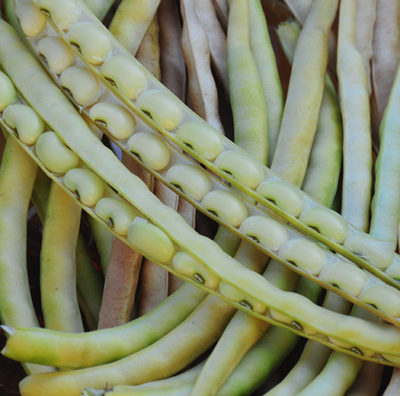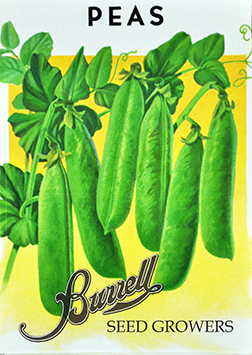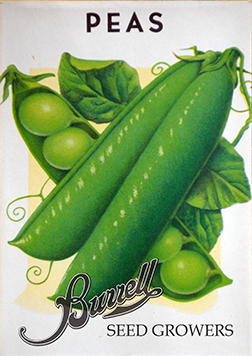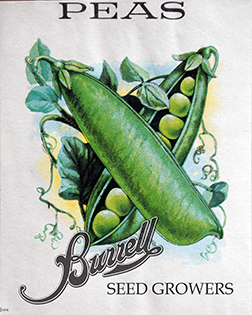Growing Peas and Cowpeas.
It’s a Southern thing! Simmered with ham, onions and garlic, fresh cowpeas are a classic dish. Add some some snaps (immature cowpea pods) and you have a hearty meal! Folks drive a long way to buy bushels of Creameyes, Blackeyes and Pinkeyes from our market. More like a bean than a pea, cowpeas can be dried to store.
Blanched and added to salads or pasta, shell peas are a versatile vegetable that adds a touch of sweetness to your meal. Snow peas stir fried with broccoli and green onions with fresh ginger and garlic make a savory supper. Eaten right off the vine, snap peas are a gardener’s delight. Snap peas are another vegetable that gets children hooked on gardening.
Peas are a cool weather crop that can be planted as soon as the ground can be worked in the spring. They can be replanted later summer for a fall crop or grown throughout the season in cool climates. Cowpeas are a warm weather crop that should be planted after all danger of frost has passed. Both are dynamic accumulators that improve the soil by pulling nitrogen up with their deep root systems. Plant our heirloom pea seeds when soil temperatures reach 45º, about 4 weeks before the last spring frost. Sow seeds 1″ to 1 1/2″ deep, 2″ apart next to a trellis or in rows 2′ to 3′ apart depending on variety. Keep evenly moist, but not wet. In dry areas, mulching helps moderate watering and weeding.
Heirloom cowpea seeds should be planted when soil temperatures reach 60º to 65º. Direct seed 1″ to 2″ deep, 4″ to 8″ apart, in rows 2′ wide. Cow peas can tolerate some light shade so they are often planted next to our okra. Water thoroughly, then occasionally, as the weather requires. They will tolerate light drought, but produce better with some moisture.
Good companion crops for peas are beans, celery, corn cucumbers, eggplant, peppers, radishes, spinach, tomatoes and turnips. Bad companion crops are onions, garlic, leeks and shallots. Cowpeas are a good companion crop for corn as they repel the moths that lay their eggs on cornstalks and fix nitrogen.
-

Cowpea – Top Pick Pinkeye Pea
$2.60 – $13.00 -

Cowpea – California Blackeye Pea
$2.60 – $12.00 -

Cowpea – Top Pick Cream Pea
$2.60 – $13.00 -

Peas Snow – Oregon Sugar Pod II
$2.60 – $11.20 -

Peas Snap – Sugar Ann
$2.60 – $11.70 -

Peas Snap – Super Sugar Snap
$2.60 – $15.00 -

Peas Snap – Sugar Sprint (PVP)
$2.60 – $9.30 -

Peas Snap – Sugar Snap
$2.60 – $11.40 -

Peas Snap – Sugar Lace II
$2.60 – $12.80 -

Peas Snow – Dwarf Grey Sugar Pod
$2.60 – $11.30 -

Peas Shell – Wando
$2.60 – $11.30 -

Peas Shell – Lincoln
$2.60 – $11.50 -

Peas Shell – Little Marvel
$2.60 – $11.50 -

Peas Shell – Laxton’s Progress #9
$2.60 – $11.40 -

Peas Shell – Rondo Italian
$2.60 – $11.70 -

Peas Shell – Knight
$2.60 – $11.30 -

Peas Shell – Green Arrow
$2.60 – $11.30
-

Cowpea – Top Pick Pinkeye Pea
$2.60 – $13.00 -

Cowpea – California Blackeye Pea
$2.60 – $12.00 -

Cowpea – Top Pick Cream Pea
$2.60 – $13.00 -

Peas Snow – Oregon Sugar Pod II
$2.60 – $11.20 -

Peas Snap – Sugar Ann
$2.60 – $11.70 -

Peas Snap – Super Sugar Snap
$2.60 – $15.00 -

Peas Snap – Sugar Sprint (PVP)
$2.60 – $9.30 -

Peas Snap – Sugar Snap
$2.60 – $11.40 -

Peas Snap – Sugar Lace II
$2.60 – $12.80 -

Peas Snow – Dwarf Grey Sugar Pod
$2.60 – $11.30 -

Peas Shell – Wando
$2.60 – $11.30 -

Peas Shell – Lincoln
$2.60 – $11.50 -

Peas Shell – Little Marvel
$2.60 – $11.50 -

Peas Shell – Laxton’s Progress #9
$2.60 – $11.40 -

Peas Shell – Rondo Italian
$2.60 – $11.70 -

Peas Shell – Knight
$2.60 – $11.30 -

Peas Shell – Green Arrow
$2.60 – $11.30
Growing Peas and Cowpeas.
It’s a Southern thing! Simmered with ham, onions and garlic, fresh cowpeas are a classic dish. Add some some snaps (immature cowpea pods) and you have a hearty meal! Folks drive a long way to buy bushels of Creameyes, Blackeyes and Pinkeyes from our market. More like a bean than a pea, cowpeas can be dried to store.
Blanched and added to salads or pasta, shell peas are a versatile vegetable that adds a touch of sweetness to your meal. Snow peas stir fried with broccoli and green onions with fresh ginger and garlic make a savory supper. Eaten right off the vine, snap peas are a gardener’s delight. Snap peas are another vegetable that gets children hooked on gardening.
Peas are a cool weather crop that can be planted as soon as the ground can be worked in the spring. They can be replanted later summer for a fall crop or grown throughout the season in cool climates. Cowpeas are a warm weather crop that should be planted after all danger of frost has passed. Both are dynamic accumulators that improve the soil by pulling nitrogen up with their deep root systems. Plant our heirloom pea seeds when soil temperatures reach 45º, about 4 weeks before the last spring frost. Sow seeds 1″ to 1 1/2″ deep, 2″ apart next to a trellis or in rows 2′ to 3′ apart depending on variety. Keep evenly moist, but not wet. In dry areas, mulching helps moderate watering and weeding.
Heirloom cowpea seeds should be planted when soil temperatures reach 60º to 65º. Direct seed 1″ to 2″ deep, 4″ to 8″ apart, in rows 2′ wide. Cow peas can tolerate some light shade so they are often planted next to our okra. Water thoroughly, then occasionally, as the weather requires. They will tolerate light drought, but produce better with some moisture.
Good companion crops for peas are beans, celery, corn cucumbers, eggplant, peppers, radishes, spinach, tomatoes and turnips. Bad companion crops are onions, garlic, leeks and shallots. Cowpeas are a good companion crop for corn as they repel the moths that lay their eggs on cornstalks and fix nitrogen.

